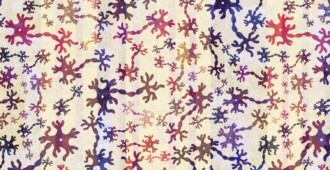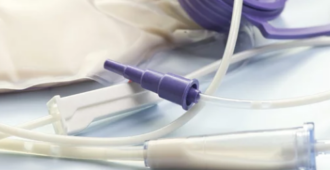Beauty is often said to be skin deep, but in terms of proteins, their appearance means everything. Its appearance and shape denotes its role in our cells and allows it to attach itself to other proteins and parts of the cell to perform its role. If its appearance is significantly altered through misfolding, turning it into a ‘beast’, it can no longer perform its role properly, rendering it useless. Not only does this mean that a protein’s regular role is not being performed, but it also means that there could be a build up of beastly, misfolded proteins in the cell, if they are not recycled efficiently. Misfolded proteins was the topic of discussion at one of this afternoon’s sessions of the symposium – topics ranged from the machinery or location involved in the folding to which proteins, SOD1 and TDP-43 among them, are being misfolded and why.
Protein Origami
When our proteins are first built in our cells, they can be related to a piece of paper. On its own, it can’t perform its regular function so it needs to be folded into its final form – in this example, a paper aeroplane. To do this, it is fed inside a network of connecting tube like structures called the endoplasmic reticulum – or ER for short, where it is folded and sent to its final destination to perform its role within the cell.
This everyday process within the ER can become stressed when misfolded proteins build up inside which triggers a response to try to restore order. Our cells cannot maintain this for a long period, which isn’t normally a problem as ‘regular’ issues are short-lived. However, when proteins are regularly misfolded in diseases such as MND, this can cause pandemonium as the response that normally restores order cannot cope with the sheer volume of misfolded proteins, which causes the motor neurones to degenerate.
Stressful response to MND
In the first presentation of this session, Dr Julie Atkin from La Trobe University, Australia discussed how there is increasing evidence to suggest that ER stress is linked to MND. Although ER is found in every cell in our body, little is understood about it in neurones. In a previous study, her laboratory demonstrated that ER is actively trying to restore order, both in the spinal cords of mice that model the disease and people with MND. This response is one of the first MND causing events to occur in a mouse model. Dr Atkin’s current area of study is centred on understanding how this response is activated in MND. In her overview she demonstrated that many of the damaged proteins recently associated with MND cause ER stress.
Their most recent studies have suggested that issues with transport away from the ER could cause the build up of misfolded proteins leading to stress and a response to restore order. Understanding how the ER stress response is activated could be important in order to device new treatments that target this system, stop the neurone from being stressed, and potentially stop it from dying.
The next few talks moved to looking at how and why some of these proteins may become unfolded and how this is helped by the cells’ coping and balance-maintaining systems.
The beginning of Nic Dokholyan’s talk really made me sit up and take notice, no cell pathway diagrams (cartoons), no images or cells fluorescing different colours under a laser microscope and no ‘blots’. It was a cartoon of an elephant, representing the Chinese proverb of a blind man and an elephant.
He explained that this represented his impression of the knowledge of the MND research community, after attending the International Symposium on ALS/MND in Berlin two years ago. Everyone knew their own particular part of the elephant (or the underlying cause of MND) really well, but no-one had put all the bits together to get the overall shape / see the whole cause of MND. Doing a rough assessment of all of the known causes of MND (via a method he described but I didn’t quite catch or understand –probably the latter!), he concluded that SOD1 misfolding should be at the centre of the ‘elephant’. Results showing that copies of SOD1 protein are modified in blood samples from people who do not have MND (including a sample of his own) was the starting point for the research he presented in Sydney. Dr Dokholyan’s went on to describe a series of elegant techniques demonstrating how a very minor, small alteration to the surface of a protein can affect its ability to misfold and accumulate within motor neurones. (Perhaps going back to the earlier beauty analogy, this is the equivalent of having a mole or facial blemish removed.)
Read our official press release from day two of the symposium.






Comments are closed.